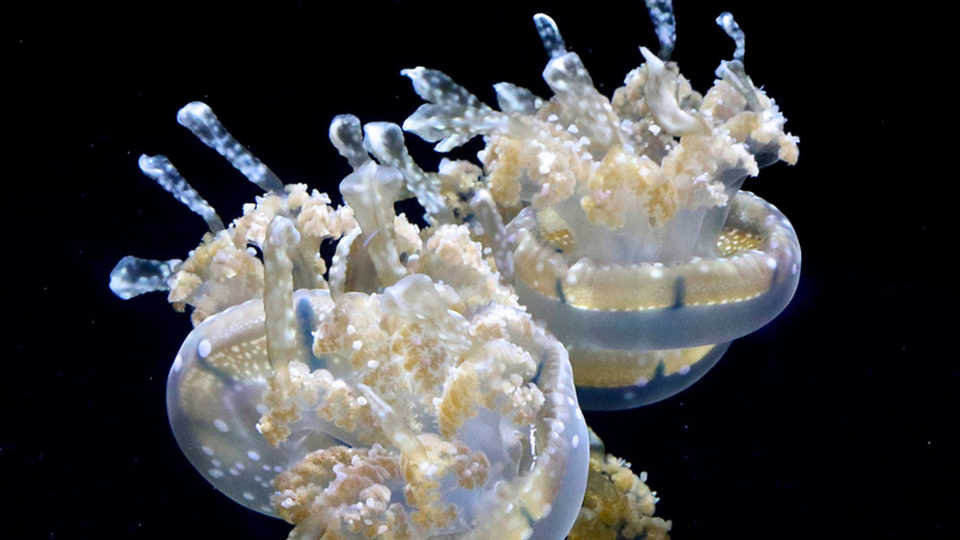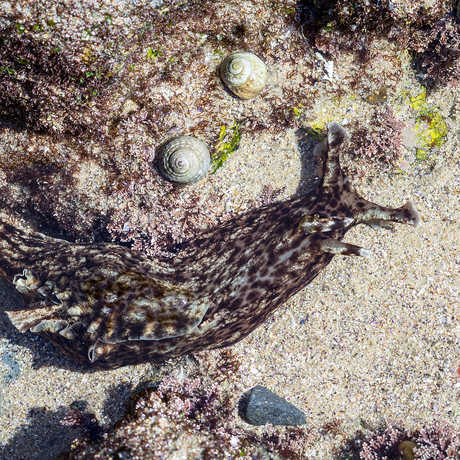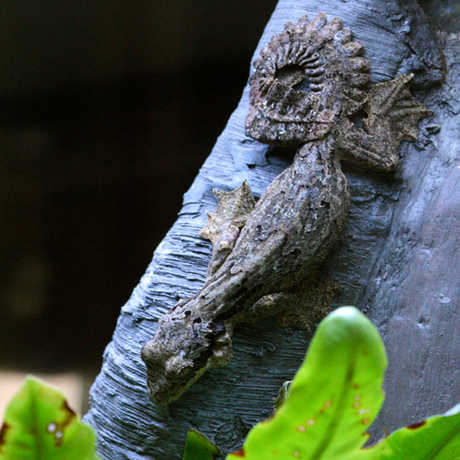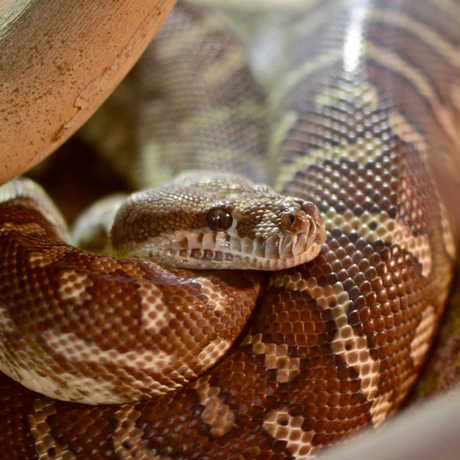
© Ron DeCloux
While visiting our Water Planet exhibit, students will observe and compare aquatic and desert animals while studying how they survive in these different environments.
Through this scavenger hunt, students will:
- learn about adaptations that help animals survive in underwater habitats or desert habitats.
- observe examples of aquatic animals and desert animals.
- record observations using drawings and words.
- Animal Adaptation Scavenger Hunt (one copy per student)
- pencils (one per student)
- optional: clipboards or science journals (one per student)
Teacher Tip: We've provided copies of the hunt in English, Spanish, and Chinese. Because this hunt takes place in the Water Planet section of the Aquarium, we also encourage you to peruse that Educator Exhibit Guide for your grade level!
- Clearly define the word “adaptation” for your students as a structure or behavior that helps an organism survive in its environment. Provide a few examples and ask your students to think of other examples.
- Explain that you will be visiting an exhibit where you will see some animals that live surrounded by water and other animals that live with very little water. Have students brainstorm adaptations that might help animals survive in each of these situations.
- Go over the questions on the scavenger hunt with your students and make sure they understand what they will be doing.
- Remind your students to be careful not to drop or lose their pencils, clipboards, or scavenger hunts while they are exploring the exhibits. Be especially cautious with these items around open-top tanks. Objects that fall into the tanks could be harmful to the animals!
- Now, take your students into the Water Planet Exhibit, located in the Aquarium on the Lower Level.
Teacher Tip: Ideally, you'd spend a moment to go over the scavenger hunt task with your adult chaperones as well.
Discuss the adaptations that your students observed in the exhibit. Ask students to share examples of adaptations that they drew or wrote about, and to explain how each adaptation helps the animal survive.
The Water Planet Exhibit in the Aquarium displays some animals that live surrounded by water and some animals that live with very little water. Different parts of the exhibit highlight different adaptations that help the animals deal with the challenges of their particular habitat.
Look for signs high on the walls to see what theme is being highlighted in each section of the exhibit. Adaptations for reproduction, movement, feeding, defense, and sensing are featured for animals in underwater environments. The desert section focuses on adaptations for survival in areas where water is scarce.
The interior pages of this scavenger hunt guide students to focus on adaptations for feeding and moving underwater. While students should start by looking in the “Feeding” and “Moving” sections of the exhibit, they should also feel free to use animals from other sections as examples. The back page focuses on adaptations for survival in dry environments. The questions on that page will be best answered in the “Precious Little Water” section of the exhibit.
Grade Three
Life Science
- 3a. Students know plants and animals have structures that serve different functions in growth, survival, and reproduction.
- 3b. Students know examples of diverse life forms in different environments, such as oceans, deserts, tundra, forests, grasslands, and wetlands.


